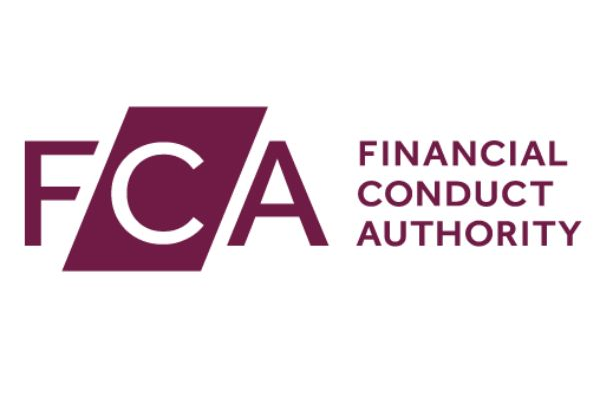How Much Deposit do I Need for a Bridging Loan?
Bridging loans serve as a dynamic financing solution in the ever-evolving world of real estate, providing a quick and flexible bridge for property transactions. One of the fundamental questions for potential borrowers is, “How much deposit do I need for a bridging loan?” In this blog post, we unravel the intricacies of deposit requirements, drawing insights from BridgingLoans.co.uk, a reputable source for bridging loan information.
Understanding Deposit Requirements:
Loan-to-value (LTV) ratio:
The loan-to-value ratio is a key determinant in calculating the deposit requirement for a bridging loan.
We suggest that lenders typically offer LTV ratios ranging from 65% to 80% or higher. This means they may be willing to finance a certain percentage of the property’s value.
Property type and valuation:
The type of property being used as security for the loan influences the deposit amount.
Bridging lenders often require a professional property valuation to determine its market worth. The outcome of this valuation contributes to setting the loan amount and, consequently, the deposit required.
Creditworthiness and risk assessment:
Borrowers’ creditworthiness and the perceived risk associated with the loan play a significant role in determining deposit requirements.
A higher-risk scenario might result in a lower LTV ratio, requiring a larger deposit. Conversely, a lower-risk profile may allow for a higher LTV ratio, reducing the deposit amount.
Commercial vs. residential properties:
The nature of the property—whether it’s residential, commercial, or a development project—can impact deposit requirements.
Commercial properties or projects with unique characteristics may necessitate a different approach to deposit calculations.
Negotiation and individual circumstances:
Deposit requirements are not set in stone and can often be negotiated with the lender.
We advise potential borrowers to discuss their individual circumstances with lenders to find a tailored solution that aligns with their financial goals.
The deposit required for a bridging loan is a multifaceted consideration, with variables such as LTV ratios, property valuation, creditworthiness, and property type coming into play. BridgingLoans.co.uk offers valuable insights into these factors, empowering borrowers to make informed decisions.
As you embark on your bridging loan journey, it’s crucial to engage with reputable lenders and leverage the expertise provided by BridgingLoans.co.uk. By understanding the deposit requirements and collaborating with professionals in the field, you can navigate the complexities of bridging finance and unlock the potential benefits of this versatile financing option.
Bridging Loans in the UK: History and Future
Bridging finance has gained appeal in the UK as a short-term financial alternative. These loans are typically used to finance real estate development projects or to bridge the financial gap between buying a new home and selling an older one. This blog will go through the background, functioning, and potential future of bridging loans in the UK.
History of bridging loans in the UK
Despite their long history, bridging loans weren’t always as popular as they are today. Bridging finance was used by developers of real estate to finance their projects. This is because they needed rapid cash to purchase land and other assets before securing long-term financing, something that bridging finance offers. As time went on, bridging loan usage became more and more common, especially in the property sector.
The first bridging loan company in the UK was established in the 1960s; however, they didn’t experience a boom in the UK real estate market until the 1980s, when they were used to finance property purchases. Since then, bridging loans have grown in acceptance and become commonplace financial tools.
How do bridging loans work?
Bridging finance is commonly used to bridge the financial gap between purchasing a new house and selling an existing one. It may also help with the financing of commercial or residential property developments. Bridge loans come in both secured and unsecured varieties, and their interest rates are often greater than those of conventional loans.
Applicants seeking bridging loans are usually asked to put up property or other valuable assets as security. After determining the value of the security, the lender will then establish the loan’s size. Normally, bridging loans last between one and twelve months; however, they can last longer if absolutely needed. The entire sum of the bridging loan is typically due at the conclusion of the agreed-upon term, while the borrower usually makes monthly interest payments. However, some bridging loans may have “rolled-up” interest, where interest is accumulated and settled along with the principal amount at the loan’s end.
Why are bridging loans popular?
Numerous factors contribute to the popularity of bridge loans. First of all, getting them is quick and simple. They are therefore perfect in circumstances requiring immediate access to finances, such as real estate auctions or renovations. Bridging loans are further adaptable. They may be utilised for a number of things, such as real estate acquisitions, renovations, and corporate cash flow. Finally, applicants with bad credit records can still apply for bridging loans. This makes them a desirable alternative for those who would not be able to qualify for a conventional mortgage.
The future of bridging loans in the UK
Bridging loans in the UK appear to have a promising future. Bridging loans are anticipated to be in more demand as long as housing prices continue to climb. Furthermore, as a result of the present economic scenario, traditional lenders have tightened their lending conditions. Certain people have found it more difficult to obtain a mortgage as a result of this. Other financial products, such as bridging loans, will very probably benefit from this.
The growing usage of technology is one development that is expected to influence the future of bridging loans. Currently, many lenders provide automated underwriting and online application procedures, speeding up and simplifying the financing process for applicants. Additionally, the use of digital platforms is probably going to promote openness and competition in the market for bridging loans, which might result in borrowers paying reduced interest rates and costs.
The rising need for sustainable finance is another trend that will most likely impact how bridging loans are used in the future. This is especially essential in the housing market, where there is increasing pressure to reduce carbon emissions and improve energy efficiency. Some banks are already providing green bridging loans to help fund green initiatives like solar panel installations and energy-efficient renovations. As per the need for sustainable financial growth, more lenders will likely begin to provide green bridging loans.
In conclusion
Since bridging loans were originally introduced in the UK in the 1960s, they have advanced significantly. They are currently frequently used and are becoming a popular kind of funding. As traditional lenders tighten their lending rules in reaction to growing property prices, bridging loans are anticipated to become very popular over the next few years. The rising need for sustainable finance and the greater use of technology are two trends that are projected to have an impact on financial markets.
Bridging Finance for Non-Standard Property Types: Tips and Advice
While some properties on the market will be regarded as “standard” and eligible for a traditional mortgage, others may be regarded as “non-standard” and require the use of alternate methods of funding. In this blog post, we’ll explore what non-standard property types are and how bridging finance can be used to purchase them.
What are non-standard property types?
A non-standard property type is any type of property that does not fit into the typical mould of what most people consider to be a “standard” property.
This can include things like:
- Unconventional construction methods: Properties that have been built using non-traditional construction methods, such as timber frame, modular, or steel frame construction
- Unique properties: Properties that have unique features or designs, such as converted churches or lighthouses.
- Uninhabitable properties: Properties that require significant repairs or are otherwise unliveable are classified as uninhabitable properties.
- Non-traditional use properties: Properties that are being transformed but are not generally used for residential reasons, such as warehouses or factories.
The problem with non-standard properties is that, depending on their particular characteristics, they might not be eligible for conventional mortgage financing.
What is bridging finance?
Bridging loans are more often than not used to “bridge the gap” when you are purchasing a new home and your current one hasn’t yet been sold. Bridging loans are frequently used for this purpose, and they can also be used while you wait for a more conventional kind of funding, like a mortgage.
Bridging finance for non-standard property types
Bridging finance can offer a flexible source of capital that can be adjusted to match the individual needs of the borrower.
This is one advantage of employing it for non-standard property types. This is essential for non-standard properties because they could have special qualities that call for specialised financing.
Before you make a decision on obtaining bridging financing for non-standard property types, here are some tips and pointers to help you navigate the process:
Work with a specialist lender
It is a good idea to use a specialised lender who has experience financing non-traditional property types. This is crucial when it comes to these types of properties. A specialist lender will be better able to offer specialised financing options since they will have a better awareness of the hazards connected with non-standard properties.
Consider the risks
Non-standard properties come with unique risks that traditional lenders may not be willing to take on. Before pursuing bridging finance for a non-standard property, it’s important to carefully consider the risks and ensure that you have a plan in place to mitigate them.
Be prepared to pay a higher interest rate
Bridging finance typically comes with a higher interest rate than traditional mortgage financing. This is particularly true for non-standard properties, which are considered to be at higher risk. Be prepared to pay a higher interest rate when securing bridging finance for a non-standard property.
Have a plan in place for repayment
When securing bridging finance for a non-standard property, it’s important to have a plan in place for repayment. This could entail selling an existing property, arranging longer-term financing or paying off the loan with the proceeds from the sale of the new property.
Bridging Loans for Property Portfolios: Managing Multiple Transactions
Building and managing a property portfolio is an exciting venture for investors seeking long-term returns. However, expanding a property portfolio often involves managing multiple transactions simultaneously, which can be financially challenging. Introducing a game-changer: bridging loans. Today, we embark on a journey to uncover the remarkable potential of these financial instruments in empowering investors to conquer the intricate realm of managing multiple property transactions within their portfolios. In this blog post, we’ll delve into the depths of bridging loans and discover the myriad ways in which they can serve as valuable allies for astute investors seeking seamless navigation through the intricate landscape of property portfolio management. Brace yourself for insights that will revolutionise your investment strategy! From leveraging funds for acquisitions to optimising cash flow during refinancing, let’s delve into the world of bridging loans and discover how they can streamline the management of property portfolios.
Expanding your property portfolio
Unlocking a realm of possibilities, bridging loans offer a pivotal advantage to property portfolios by seamlessly providing short-term financing to facilitate acquisitions. Be it the addition of captivating residential properties or the allure of lucrative commercial ventures, bridging loans effortlessly bridges the gap between purchase and securing long-term financing, setting the stage for your portfolio’s flourishing success. This allows you to act quickly and seize investment opportunities without delay.
Unlocking equity for portfolio growth
As your property portfolio expands, you may encounter situations where you need to access equity from existing properties to fund new acquisitions or property developments. Opening the doors to flexibility and boundless opportunities, bridging loans present a dynamic solution, acting as a seamless bridge between the sale of one property and the acquisition of another. By harnessing the value of your existing assets, you can unlock the true growth potential of your portfolio, propelling it to new heights of success and prosperity. Embrace the power of bridging loans and embark on a journey towards portfolio expansion like never before.
Optimal cash flow management
Managing multiple transactions within a property portfolio can place a strain on your cash flow, especially when there are gaps between property sales and purchases. Bridging loans can alleviate this financial burden by providing short-term liquidity. By securing a bridging loan, you can maintain a steady cash flow and ensure smooth operations within your portfolio, avoiding missed opportunities or financial setbacks.
Portfolio refinancing
In some cases, property investors may seek to refinance their portfolio to optimise their financial position. This can involve consolidating existing loans or accessing better interest rates and terms. Bridging loans can serve as a tool during this refinancing process, allowing investors to access immediate funds while the new financing is being arranged. This ensures a seamless transition and avoids potential disruption to on-going property management activities.
Tailored solutions for portfolio management
Every property portfolio is unique, with its own set of objectives, challenges, and opportunities. The beauty of bridging loans is their flexibility, as they can be customised to meet specific portfolio management needs. Whether you require a loan with a specific term, require interest-only payments, or need a higher loan-to-value ratio, bridging loan lenders can often accommodate these requirements, providing tailored solutions for your portfolio management needs.
Managing multiple property transactions within a portfolio requires careful financial planning and strategic thinking. Bridging loans offers property investors a versatile tool to navigate the complexities of portfolio management. From facilitating acquisitions to optimising cash flow and enabling portfolio refinancing, bridging loans can provide the necessary flexibility and liquidity to support the growth and success of your property portfolio. By leveraging the benefits of bridging loans, investors can confidently pursue their property investment goals while efficiently managing their portfolio’s transactions.
FCA Urges Credit Information Sector to Alter its Approach
The FCA has issued a formal call to the credit information sector to alter its approach to the provision of information to UK banks and lenders. Regulators have proposed new measures aimed at enabling lenders to make better lending decisions based on the broader financial circumstances of applicants.
Proposals presented by the FCA to benefit borrowers and lenders alike include the following:
- Establishing a new, more representative, and accountable industry body to oversee arrangements for the sharing of credit information
- Improving the quality and coverage of credit information
- Enabling greater competition and innovation through potential changes to data access arrangements and more timely data reporting
- Simplifying ways for consumers to access their credit files and dispute any inaccurate information held about them
Speaking on behalf of the FCA, Executive Director of Consumers and Competition, Sheldon Mills, emphasised the importance of a fair, effective, and accountable credit information market.
“It is vital that the credit information market works effectively for firms and consumers. We want to see industry reform to help deliver the changes, but in the meantime, it is important consumers know how to access their credit information and talk to their lenders if they are facing difficulties,” he said.
“Our proposals will help consumers get better decisions from lenders, and lenders will have confidence that the information they have access to is sufficiently comprehensive.”
Research suggests that while 90% of people have a basic understanding of what a credit score is, there is widespread confusion about the kinds of activities that can affect a consumer’s credit rating. For example, almost 50% of borrowers facing financial difficulties believe that simply contacting their lenders to discuss their issues will have an adverse effect on their credit score.
Meanwhile, 43% of people are not aware of the fact that they have the legal right to access their credit reports for free.
One in three consumers does not know their credit score
Elsewhere, a study conducted by the Post Office found that as many as one in three people do not know their credit scores. The poll was carried out to determine the extent to which the average person understands financial jargon and the impact complex terminology can have on a typical consumer.
One in five of those polled admitted that their lack of confidence regarding financial jargon had discouraged them from applying for financial products at some point in the past.
Commenting on the findings, the director of financial services products at Post Office, Ed Dutton, said that the figures illustrate just how important it is for banks and lenders to cut out the complexities when dealing with customers.
“We believe it’s important to speak to customers using straightforward language so that they feel confident in their decisions when borrowing,” he said.
“Personal loans can be used for a variety of reasons, such as buying a car or extending a home, and offer people a different option to other products, such as credit cards.”
“It’s always worth taking the time to read about any financial product you are considering and taking the time to seek help on jargon if anything is unclear.”
40% of those polled stated that while they have consulted with finance experts in the past, they felt confused or even intimidated due to the presence of complex terminology. Among them, 20% said they lacked the confidence to request clarification of such terms.
Worryingly, 22% said that even if they did not fully understand the language it contained, they would still sign a financial agreement or contract.
Just 1% of UK Land Utilised for Residential Developments
Once again, it is looking increasingly unlikely that the UK government will come close to meeting its own lofty housebuilding targets. Available inventory (particularly where affordable housing is concerned) is at an all-time low, and the country’s escalating housing crisis shows no signs of abating.
While all this is going on, a study conducted by Unlatch has shed light on just how much of the UK’s total land space is being used for residential developments. Or should that be, how little space is being utilised for such purposes?
Across the UK, there is an estimated 13.3 million hectares of available space. Of which, only 152,380 hectares of space have so far been used to develop residential properties, equating to a mere 1.1% of all available space.
Unlatch set out to determine which local councils across the country are making the most efficient use of the space they have available. And in doing so, we discovered that just under 99% of all UK land is being used for entirely non-residential purposes.
The figures should come as no less than shocking to anyone who understands the true extent of the housing crisis and the near-impossibility of getting on the UK housing ladder for the first time; fresh calls have been directed at the government to significantly step up housebuilding over the coming years, even though the likelihood of its own targets being reached is practically zero.
The new housing supply remains significantly lower than the government’s ambition of 300,000 new homes per year, with just 216,000 new homes having been supplied in 2021.
Public perceptions are misguided
Commenting on the findings, the head of the UK for Unlatch, Lee Martin, said that while most people think a sizeable proportion of UK land space has been allocated for residential developments, this really could not be further from the truth.
“There seems to be a common misconception amongst the public that the nation is bursting at the seams when it comes to the number of homes already built and that we simply have no available land left to address the current housing crisis,” he said.
“This simply isn’t the case, and, in fact, land used for residential development currently accounts for just over one percent of the nation’s total land area.”
“Of course, in major urban areas, this percentage is far higher, particularly in London, where the demand for housing is greater due to a larger population.”
“However, in some areas, residential development accounts for a tiny fraction of total land available, and it’s ironically in these areas where current homeowners are often most passionately against the construction of new homes.”
Regional land usage differences
The figures from Unlatch suggest that land usage for residential purposes across the UK is fairly consistent. However, there are some areas where a much larger or smaller proportion of available land is being used for such purposes.
For example, the highest land usage levels were recorded in the North West and the South East, both coming out at 1.4% land usage; elsewhere, the lowest land usage level was recorded in the Southwest of England, with just 0.7% of available land being used for residential developments.
Land usage rates in busy urban centres were the highest of all, with London recording a total combined residential land usage rate of 10.1%. Chelsea and Kensington had the highest land usage levels of all, with 22.3% of the space available being used for residential developments.
Ryedale, Richmond shire, Craven, West Devon, and Northumberland featured at the opposite end of the scale with a 0.2% utilisation rate, along with Eden, where just 1% of the land has been used for residential developments.
Cost of Living Crisis Now Hitting Kids’ Piggy Banks, Reports the Halifax
The effects of the escalating living cost crisis are being felt by almost every household across the UK. A new report published by Halifax suggests that cash-strapped parents are even being forced to reduce their kids’ pocket money payments in order to help make ends meet.
Figures from Halifax’s annual pocket money tracking index suggest that the average UK child now receives £4.99 per week in pocket money. This represents a significant 23% decrease from last year when the average came out at £6.48.
Worse still, the average weekly pocket money payment is now lower than it has been since 2001. At this point, the average child pocketed £2.81 per week. The annual tracker hit its all-time high in 2017 when the average pocket money payment was £7.04.
According to Halifax, parents and guardians struggling to cope with skyrocketing inflation are taking a more dynamic and flexible approach to pocket money provision than ever before. Around one in three households have been forced to reduce kids’ pocket money payments, with more expected to follow suit as inflation surges to a predicted 13% high later this year.
Lifestyle alterations to compensate
On the plus side, there was at least some positive news to come out of the Halifax report. Most of the parents and guardians surveyed said that they were willing to make adjustments to their own lifestyles and spending habits in order to sustain their kids’ pocket money payments.
For example, around 50% of the parents surveyed said they would be willing to eat out less and curb their general leisure activities to safeguard their kids’ piggy banks. 25% said they would work towards reducing the costs of their weekly shopping, while just under half said they would cut down on unnecessary personal items and luxuries.
The spiralling living-cost crisis has prompted more households across the UK than ever before to switch to cheaper supermarkets, make additional efforts to reduce food waste and reconsider unnecessary purchases.
Interestingly, the report published by Halifax found that just 40% of parents and guardians give their kids pocket money on a regular basis.
As for how this money is spent, the Halifax survey found that just under 40% of kids spend most of their pocket money on sweets and gaming. 30% allocate their pocket money to toys, 29% to clothing, and 28% to books and hobbies.
However, just 22% of parents said that their children actively save most or all of their pocket money.
Talking to kids about pocket money problems
Understandably, the tendency among parents is to protect their kids to the best of their ability from the realities of economic turbulence. But as the current situation could worsen before it gets any better, parents are being advised to be a little more transparent with their kids.
Speaking on behalf of Halifax, Emma Abrahams advises taking an honest and open approach to discussing affordability issues with children.
“As household costs continue to rise, some parents are having to make difficult choices as they adapt to the conditions they face, from cutting down on the family grocery bill to passing on date night or that much-wanted personal purchase at the shops,” said Abrahams.
“Having an open and honest conversation with your children about what you can afford to give [as pocket money] is likely to improve their understanding and relationship with finances in the future.”
What is the Difference Between a First and Second Charge Mortgage?
In order to understand how second-charge mortgages differ from first-charge mortgages, you need to consider the way home equity works.
For example, let’s say your home has a market value of £300,000 and you have £100,000 remaining on your original mortgage (your first-charge mortgage). You have built up £200,000 in equity in your home, i.e., the proportion of your home you own.
While continuing your monthly mortgage repayments as normal, you now have the option of taking out a second-charge mortgage (aka a second mortgage) against this equity. You may be able to borrow anything up to 85% LTV (loan to value) against your equity, meaning a maximum loan value of £170,000.
If you choose to do so, you will then have two mortgages secured against your home. Both require regular monthly repayments and carry the same risk of repossession if you fall into arrears.
What is the purpose of a second mortgage?
A second-charge mortgage can be a useful product for those who fall into the “asset-rich, cash-poor” bracket. Skyrocketing house prices have seen more UK homeowners than ever before become asset-rich over the past decade.
With the average UK house price now sitting at around £300,000, a second-charge mortgage can open the door to significant equity release at an affordable price.
Just a few of the most common reasons for taking out second mortgages include the following:
- Consolidating multiple debts to save money
- Funding for major home improvements and renovations
- Purchasing investment properties such as buy-to-let homes
- Helping family members get on the property ladder
- Buying cars and paying for holidays
- Funding new business start-up costs
With comparatively few restrictions, a second mortgage can be used for almost any legal purpose whatsoever.
What are the benefits of a second mortgage?
For those who are eligible for a second-charge mortgage, the main benefits are as follows:
- The potential to access a significant amount of money at a low rate of interest, repaid over a series of affordable monthly repayments
- A simpler and more cost-effective alternative to conventional equity release products with much greater flexibility
- There are no restrictions placed on how the funds are allocated, and there is the option of early repayment with some second mortgage products.
- Relaxed lending criteria, with loans available to applicants with poor credit and/or no formal proof of income.
Importantly, most second mortgage loans are bespoke financial products, tailored to meet the unique requirements of each applicant.
What are the drawbacks of a second mortgage?
On the downside, some of the potential disadvantages of second mortgage products are as follows:
- Interest rates vary significantly from one lender to the next, and additional costs may apply: arrangement fees, valuation fees, administration fees, broker fees, and so on.
- After taking out a second mortgage, you will have two mortgages secured against your home and will need to make two regular mortgage payments.
- Affordable second-charge mortgage products can be more difficult to access for those with poor credit, a history of bankruptcy, or self-employed status.
- If your home decreases in value and you are forced to sell it to repay your mortgages, the funds raised may not be sufficient to cover the full outstanding balance.
It is therefore essential to discuss all the potential pros and cons with your provider before applying for a secured loan.
How do you get a second mortgage?
Second-charge mortgages are available from a wide variety of major banks and specialist lenders. However, it is essential to apply exclusively to providers that are authorised and regulated by the Financial Conduct Authority (FCA).
The application process itself can be surprisingly straightforward, as the loan is technically issued against your equity, not the property itself. With all the essential paperwork and documentation in place, a second mortgage can be organised and accessed within a couple of weeks.
During this, you will be expected to provide evidence of your financial position, your employment status, your income level, any other major debts you are currently repaying, and so on.
Delays and disruptions may occur along the way, so it is advisable to get your application underway as soon as possible.




 0116 402 7982
0116 402 7982







